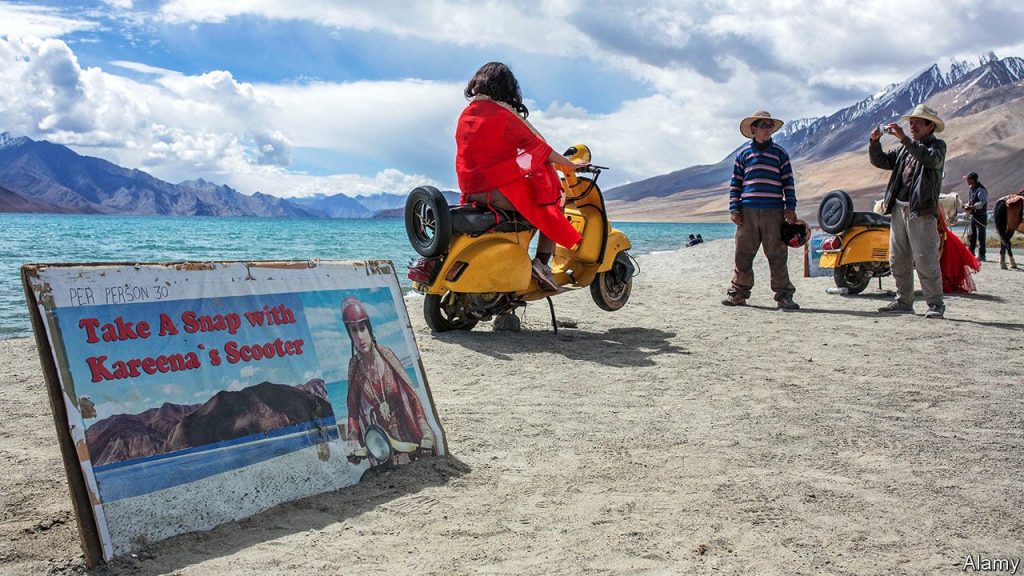Pangong Lake in Ladakh, an expanse of water at an altitude of some 4,350 meters in India’s Himalayan north-west far, is really a sublime sight. Surrounded by snow-capped peaks, its icy water is indeed clear and blue you can see far into its depths. These days yet, the lake’s edge (pictured) includes a new attraction. Across the shore sit twelve roughly scooters, spaced about ten meters apart, in addition to a few plastic chairs in three colors, shaped by means of men’s bottoms. For 30 rupees ($0.41) each, tourists may take pictures of themselves installed on these props. “This can be the signature shot,” enthuses Vivek, an engineer from Delhi, as he clambers on a yellow scooter.
Until a couple of years ago, few tourists managed to get to Pangong Lake; those that did were intrepid Western backpackers mostly. The street to there get, which crosses the world’s second-highest drivable mountain pass, is really a hair-raising icy strip created to ferry soldiers to protect the border with China. But which has changed, in large part due to Bollywood. In ’09 2009, “3 Idiots”, a comedy film with Aamir Khan, among India’s favorite actors, featured a scene at the lake and another with the chairs. In 2012 that has been accompanied by “PROVIDED THAT I’VE Life”, a romance involving Pangong. Now the men in khaki share the street with minibuses filled with camera-wielding tourists. Your correspondent was press-ganged into selfies with a crowd of Mumbai workers in offices.
According to the national government, the quantity of domestic-tourism trips taken by Indians grew almost eightfold between 2000 and 2017 annually, to at least one 1.65bn. An unmeasurable but significant chunk of this is because of Bollywood. A 14th-century stepwell in Delhi, as featured in “PK”, another of Mr Khan’s films, is thronged with selfie-takers, as is another centuries-old stepwell in Rajasthan. Old forts in Rajasthan and in Goa have significantly more visitors because of the role in films far. Locations outside India are benefiting even, says Jay Kantawala, who runs Wiyo Travel, an upmarket-travel agency in Mumbai. Budapest is really a particular favorite, because of “I Away Have Given My Heart, Darling” and “When Harry Met Sejal”, two romances. One of the most unlikely destinations is really a 45-year-old plane wreck in Iceland, that was featured in “Dilwale”, a romantic-action movie that arrived in 2015.
Promoting tourism is what filmmakers attempt to do hardly. But Indian state tourist boards have cottoned onto some great benefits of their buildings and landscapes appearing on screen. In substitution for filming in new spots, directors increasingly expect things such as permits and security to be sorted out smoothly. Airlines—another of India’s fastest-growing industries—promote new routes by mention of films shot nearby.
Near Pangong, tourists’ is starting to pollute the foundation of the Indus river litter. The flow of traffic, and cars which travel around the lake’s edge, could be damaging a near-pristine and delicate habitat. Possibly the next film set there could include a little encouragement never to wreck the certain area.




















This is so fun…nothing like a great Bollywood scene!
I love Bollywood. I would love to go visit